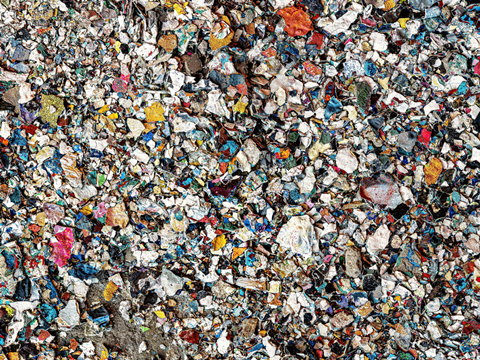
‘Downcycling’ plastic – i.e. recycling waste without sorting it – has ‘almost as much’ climate impact as incinerating it, according to a life cycle assessment (LCA) from IVL Swedish Environmental Research Institute, Swedish Plastic Recycling (Svensk Plaståtervinning), and LCA researcher Tomas Evkall.
Apparently, this is the first report of its kind to compare mechanical recycling methods via LCA with a focus on emissions across the plastics value chain – including raw material extraction, material production, waste management, and energy production.
Three scenarios for the handling of plastic packaging from Swedish households (minus deposit-covered PET) were compared: a reference scenario of direct incineration with energy recovery, wherein none of the waste is sorted or recycled; downcycling, or mixed plastic waste recycled without sorting into railway sleepers (plastic is said to replace wood in sleepers); and high-quality recycling through advanced sorting, in which each polymer fraction is recycled separately, based on what is technically and practically possible right now.
Real data from Svensk Plaståtervinning’s Site Zero facility was consulted as part of the study.
The results suggest that, compared to the reference scenario of incinerating unsorted waste, downcycling only lessens the climate impact by 4%, whereas advanced sorting and high-quality recycling achieves a 27% reduction.
“The results of the study show that high-quality recycling through advanced sorting is better for the climate than downcycling,’ says Rickard Jansson, development engineer at Svensk Plaståtervinning and participant in the expert group.
“In addition to reducing emissions from incineration, this method makes it possible to reuse large parts of the recycled material in new plastic packaging or other high-quality plastic products. This reduces the need for new plastics from fossil raw materials, leading to more resource-efficient plastic use.”
Sweden’s existing regulatory framework encourages recycling over incineration but, in the researchers’ view, it does not acknowledge the ways in which different recycling methods impact resource efficiency, opportunities or setbacks for circularity, or the climate. As such, they underline the importance of stricter requirements and ‘more adequate’ policy instruments.
“Recognizing this, we urgently need to tighten requirements and introduce adequate instruments,” says Mattias Philipsson, CEO of Svensk Plaståtervinning. “High-quality recycling through advanced sorting must become the norm, otherwise we will lock ourselves into a linear economy with high climate impact and waste of resources.
“This will be crucial for Sweden to meet its climate targets, and for us to be able to supply the market with recycled raw material in accordance with EU requirements (PPWR). High-quality recycling through advanced sorting is a prerequisite for a circular plastics economy.”
Beyond Swedish legislation, the researchers have applied their data to the EU at large, which ‘has already recognized that future requirements need to be steered towards high-quality recycling’ and reportedly considers advanced sorting a ‘requisite’.
Funded by the Swedish Institute for Water and Air Pollution Research (SIVL) and Svensk Plaståtervinning, the report was conducted by researcher Tomas Ekvall; Linnea Granström and Rickard Jansson from Svensk Plaståtervinning; and Emma Moberg and Tomas Rydberg, researchers at IVL.
The results come after the grand opening of Svensk Plaståtervinning’s Site Zero plant site in November 2023. This facility seeks to recycle all kinds of plastic packaging without emitting CO2, sorting its annual receiving capacity of 200,000 tons of mixed household waste at a sorting speed of 1,000 pieces every second.
The following summer, Quantafuel and Eurazeo opened the ReSource Denmark plastics sorting facility, designed to process 160,000 tons of plastic waste annually with Eggersmann’s advanced sorting equipment. The machinery is designed to remove impurities, separate plastics by type for chemical and mechanical recycling processes, and sort metals and food and beverage cartons to be sent for recycling.
In other news, a previous study from the University of Sheffield took an LCA approach and indicated that replacing plastics with alternative materials is ‘likely’ to increase greenhouse gas emissions by up to 90% in some product life cycles. Plastics reportedly took the advantage in nine out of 14 cases of direct life cycle emissions.
The Renewable Carbon Initiative also cautioned that LCAs might underestimate the carbon footprints of products derived from crude oil and natural gas; those for commodity plastics could be around 30% higher than originally thought, and fossil naptha’s footprint could be almost double the commonly accepted figure.
If you liked this story, you might also enjoy:
Reuse vs. single use – which is better for the environment?
Sustainable Innovation Report 2025: Current trends and future priorities
What can the world learn from South Korea’s world-leading performance in plastics circularity?

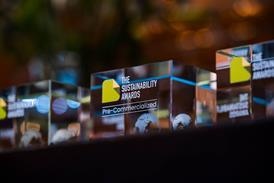
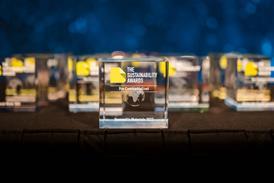
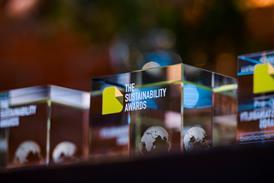
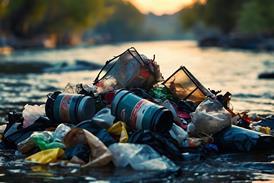
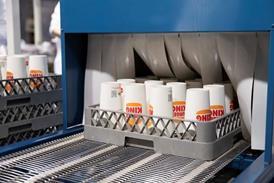












No comments yet